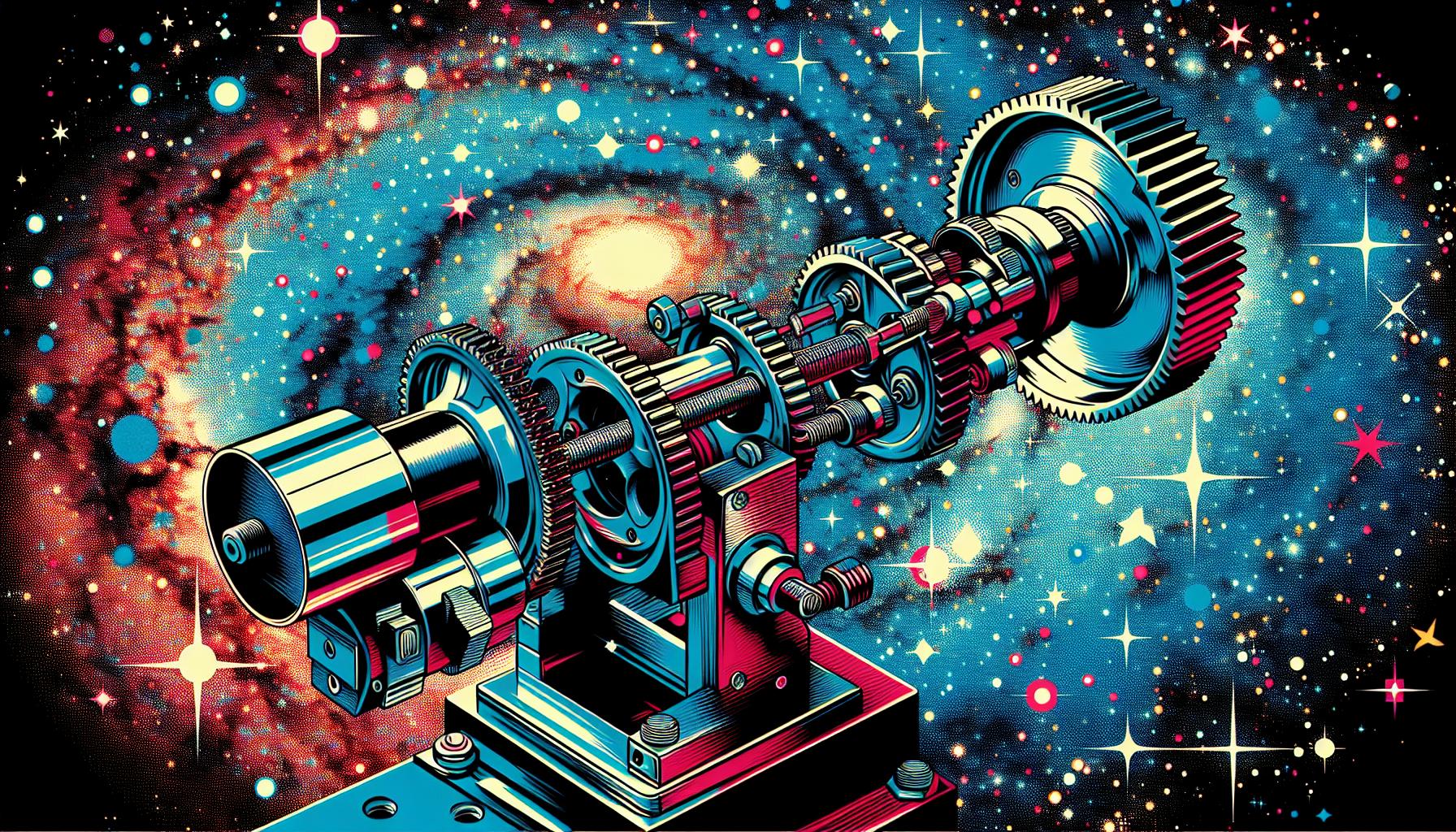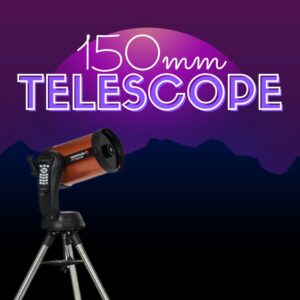This site contains affiliate links to products. I may receive a commission for purchases made through these links.
Astrophotography is a fascinating way to capture the celestial wonders of the night sky. But without the right equipment, it’s easy to end up with blurry images. That’s where a star tracker comes in. It’s a device that compensates for the Earth’s rotation, allowing you to take long-exposure shots with pinpoint sharpness.
But let’s face it, professional star trackers can be expensive. If you’re like me, you’re always on the lookout for ways to save money without compromising on quality. That’s why I’ll be showing you how to build your own DIY star tracker. With a little bit of time and effort, you’ll be able to capture breathtaking photos of the cosmos, all without breaking the bank.
So, whether you’re a seasoned astrophotographer or just starting out, this guide is for you. Let’s dive right in and get started on this exciting DIY project.
Gather the necessary materials
Assembling a DIY star tracker may seem like a daunting task at first, but it’s quite manageable once you understand what you’re doing and have the necessary items in hand. The pieces you’ll need should be all available either online or at your local electronics or hobby store.
The main components you should have are:
- A stepper motor. It must spin at around 1 revolution per day. This is to match the motion of the Earth, allowing for long exposures without star streaks.
- A stepper motor driver. It receives the signals from the Arduino and uses them to control the stepper motor.
- An Arduino or other microcontroller. It’ll control the stepper motor and determine how much to move it.
- A threaded rod and a moving part (like a nut or a spool). It will be the main mechanical part of the star tracker. It’ll be mounted to the stepper motor and the moving part (like a nut or a spool) will attach your camera mount.
- A power supply (a battery-powered one can be used for portability). It will power your Arduino, stepper motor driver, and the stepper motor. Check the power requirements for these components and choose a suitable power supply accordingly.
- A ball head to hold your camera in place. It’ll be an interface between your camera and the moving part on the threaded rod. It allows you to easily position and secure your camera according to your needs.
Remember to also gather essential tools including a soldering iron, wires, screws, screwdriver, pliers, and other relevant items you might need.
Design and build the mechanical structure
First off, grab that threaded rod we mentioned earlier. This is your main mechanical piece and needs to be wrestled into a precise shape. Work carefully to fasten it on your soon-to-be star tracker platform.
It’s time for the fun part – setting up the stepper motor. We’re targeting about 1 revolution per day here, to mirror Earth’s rotation. Remember, precision is key! The stepper motor is vital in controlling the speed and sequence of your tracker’s movement.
Let’s get you acquainted with the kit you need to actualize your mechanical structure. Using an Arduino or other microcontroller, you’ll be able to control the stepper motor. If you’re new to microcontrollers, an Arduino is a great starter option. It’s like the brain of your star tracker, regulating every mechanical beat to the rhythm of the cosmos.
For increased stability and optimum tracking, couple your set-up with a ball head. It’s a nifty addition that allows you to move your camera smoothly. It’s particularly useful when you’re trying to capture the grandeur of a full celestial arc.
Finally, remember to power it all up! A regulated power supply keeps your microcontrolled mechanical wonder ticking along neatly. It’s like the heart pumping lifeblood into your star tracker, keeping everything on point and running in sync.
Through the process, it’s essential to keep a keen eye on the alignment of every component. Precision again is our watchword. Even a slight offset can skew your final output. It might take a few attempts to perfect it, but trust me, it’ll be worth it.
This is the essence of designing and building your own mechanical structure for long-exposure astrophotography. It might be a bit complex but keep at it. The end result of capturing mesmerizing celestial images makes every step of this journey worthwhile.
Install the motor and gear system
The foremost aspect of installing the motor and gear system is the stepper motor itself. You’re going to want to attach your stepper motor to the base of the tracker. By using a combination of metal brackets and screws, you can ensure a stable mounting point for the motor. But don’t tighten the screws all the way just yet! We need a bit of wiggle room to align the gears correctly.
Next, it’s time to put the threaded rod inside the stepper motor. Remember, the threaded rod is the core mechanical component of the star tracker. It’s the part that will spin and move your camera to keep up with the stars.
A key point here is to make sure that the rod is aligned with the central axis of the stepper motor and is spinning smoothly. You can use a simple test: just spin the rod by hand. If it moves without effort – great, if it’s rigid or constrained – unwind, adjust, and try again.
After you’re confident in the rod’s alignment, mount the gear. The gear is crucial for transferring the motor’s spin to the rod. Usually, it’s a small, round piece that fits over the rod and is driven by the motor. Once it’s on the rod, adjust it so it’s in contact with the motor’s gear.
Afterwards, grab your microcontroller, we’re going to connect the stepper motor to it. Remember, the microcontroller controls the movement of the stepper motor, which is directly linked to the threaded rod and will guide the camera’s movement.
Calibrate the star tracker
Once we have installed the motor and gear system, the next important step is to calibrate our DIY star tracker. Without proper calibration, our device may not accurately track stars and we won’t get those clear, captivating long-exposure images we desire.
Calibrating our DIY star tracker involves adjusting its orientation to match that of the Earth’s rotation axis. This alignment is essential for compensating the Earth’s rotation. So, moving to the polar alignment of our DIY star tracker, ensure that the tracker axis is parallel with the Earth’s.
You’ll need a Polar scope for this, which is a small device that helps target Polaris or our North Star for calibration, and is usually mounted on the tracking device. Polaris is the ideal reference point because it’s positioned almost directly in line with this axis.
Once you have our star tracker aligned with Polaris, watch and regulate the tracker’s movement. You can use a connected laptop or a smartphone app, which interfaces with our microcontroller for adjustments. Making sure the direction and speed match the movement of the stars is an iterative process. The goal is to make the movement as seamless as possible, so the tracker compensates the Earth’s rotation without any jitter or stutter.
Trial and error are the keys here. Don’t get frustrated if it takes a few nights of tweaking to get it just right. It’s a painstaking process but well worth it for the resulting stunning astrophotographic imagery.
We may feel overwhelmed by the complexity but remember – our star tracker builds on simplicity, precision, and patience. It won’t take long before we’ll start capturing awe-inspiring images of the celestial sphere that most people never get to see. Remember, the key to patience is maintaining our focus on the rewarding end result.
Test and fine-tune the star tracker
After you’ve set your DIY star tracker up and aligned it with the Earth’s rotation axis, the next step is testing and fine-tuning. This iterative process involves minor adjustments to optimize your tracker’s operation.
Initially, I recommend performing a quick tracking accuracy check. Here’s how:
- Set up your DSLR on the star tracker and pick a bright star in the sky
- Start a long exposure shot and observe the star’s path on your camera’s LCD screen
- The star should move directly through the crosshairs or screen center, but if it doesn’t, then it’s time for some tweaks
Start with small increments of adjustment at a time. Going overboard can throw off the alignment greatly. Lastly, ensure your tracking frequency (sidereal rate) is correctly set. If not, stars can drift, resulting in blurry images.
But what if you’re dealing with severe drift issues? That could be a sign to check on the mechanical stability of your set-up. Mount stability can greatly impact the quality of your long-exposure astrophotography. Make sure the DIY star tracker isn’t wobbling around and look for any signs of instability in the stand or mount.
Working on fine-tuning the star tracker might take some time. It’s not just about aligning the components or setting the right tracking speed – it’s about continuous minor adjustments and testing.
Capture stunning astrophotography with your DIY star tracker
At this point, you’ve followed along and successfully created your DIY star tracker. You’ve calibrated it just right, and are ready to capture some amazing astrophotography. The journey’s been intricate so far, yet incredibly rewarding. But what comes next? Naturally, it’s time to mount your camera and lens onto the star tracker.
Attaching your device to the arm of the tracker should be relatively easy. Some astrophotography enthusiasts recommend using a ball head to give your camera the right level of flexibility.
Once attached, the tracker’s job is to slowly offset your camera’s movement to match the rotation of the Earth. This helps eliminate those unwanted star trails that blur your long-exposure images. And with your DIY tracker’s calibration, you are in for some excellent shots.
This is also the moment to select your exposure settings. A standard setting for a beginner is an ISO of 3200, an f/2.8 aperture, and a 15 to 30 second exposure time. However, every sky is different, and you’ll want to experiment based on your location, lens and weather conditions.
Astrophotography is about gathering as much light as possible. So, the longer your exposure time without trailing, the better. Pay attention to your first few shots – are the stars sharp, or do they trail slightly? Small adjustments at this stage go a long way in perfecting your images.
Now comes the most exciting part – capturing your first subjects! I’d suggest starting with easy targets. The Andromeda galaxy, the Orion Nebula, and the Pleiades Star Cluster are favorites among both beginners and pros, due to their relative brightness and easy-to-locate positions.
You may also like: Best Tips for Astrophotography Without a Star Tracker
Conclusion
Building your DIY star tracker is an exciting journey into the world of astrophotography. It’s not just about attaching the motor and gear system or aligning the tracker with the Earth’s rotation axis. It’s about the thrill of capturing the cosmos from your backyard. With patience and persistence, you’ll master the calibration process and start taking stunning long-exposure images. Remember, it’s all about small adjustments and experimentation.
Start with easy targets like the Andromeda galaxy or the Orion Nebula and soon you’ll be exploring distant galaxies and nebulae. So, gather your gear, aim for the stars, and let’s start tracking! Remember, astrophotography is a journey, not a destination. So, embrace the process and let your passion for the stars guide you.
Don’t forget to subscribe to our newsletter where you’ll find the latest cosmic discoveries, expert stargazing tips, and exclusive subscriber deals. Embark on your cosmic journey if you haven’t already!
FAQ
How do you build a DIY star tracker?
You begin by installing the motor and gear system and attaching the stepper motor to the base of the tracker using metal brackets. Align the threaded rod with the motor’s central axis and mount the gear on the rod to transfer the motor’s spin.
How do you calibrate this DIY star tracker?
Tracker calibration involves aligning it with Earth’s rotational axis using a Polar scope and targeting Polaris or the North Star. You may use a connected laptop or smartphone app to adjust the tracker’s movement to match the stars.
What should I do after building and calibrating the tracker?
Attach your camera and lens to the tracker. Experiment with exposure settings to capture high-quality astrophotography. It’s advisable to start with easy targets such as the Andromeda galaxy, the Orion Nebula, and the Pleiades Star Cluster.
What are the key traits I need for astrophotography?
Patience, persistence, and passion are crucial in the journey of astrophotography. There might be a lot of trial and error involved, but the rewards are satisfying, including capturing stunningly sharp, long-exposure images of stars and galaxies.



